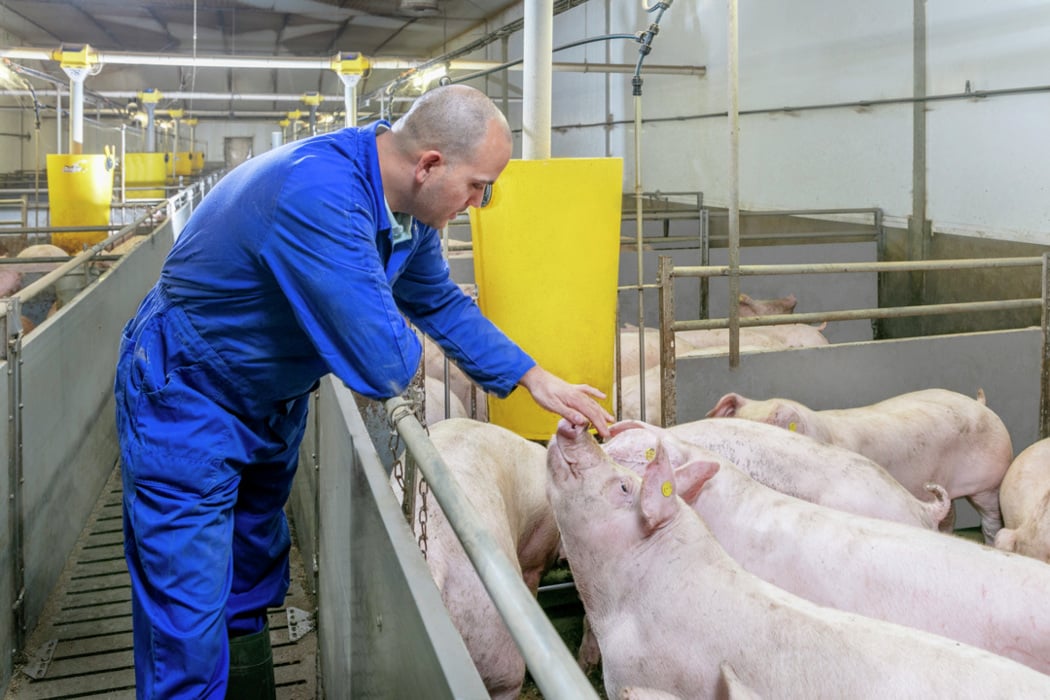A customized feeding strategy for immunocastrates
In May 2023, a royal decree regarding the castration of piglets was issued. Since January 1, 2024, it has been definitively prohibited in Belgium to castrate without anesthesia. However, it remains permissible to castrate under anesthesia in collaboration with the farm veterinarian. Other alternatives, such as immunocastration and raising intact boars, are also becoming increasingly popular. Each choice has its own advantages and disadvantages in terms of meat quality, feed conversion, and/or behavior in fattening pigs. In this article, we explain our research findings on feeding strategies for immunocastrates.

Immunocastrates vs. intact boars
At our experimental farm, we had the opportunity to test immunocastrates and intact boars simultaneously. We were able to confirm what has already been described in the literature: boars vaccinated with Improvac begin to behave more like barrows after their second vaccination. Feed intake and growth increase by 150g/day and 35g/day, respectively. This does not occur immediately after the second vaccination but after a delay of about ten days. From that point on, their aggression and sexual behavior also decrease (European Medicines Agency, 2022).
In Figure 1, you can see the daily feed intake of the immunocastrates and boars measured in the barn. In this experiment, both groups received the same feed.

Figure 1: Daily feed intake of immunocastrates (vaccinated with Improvac) and intact boars. f1 and f2 are the feed transitions.
Effect of feeding strategy
Immunocastrates and intact boars clearly have different feed needs after their second Improvac vaccination. Can we meet these needs differently with a varied feeding strategy? To answer this question, we conducted two follow-up experiments with varying concentrations (in energy and amino acids) and different levels of amino acids in the final phase.
The more concentrated feed in the final phase appears to be the best choice for immunocastrates. Less is consumed, and growth is higher, resulting in a 0.05 lower feed conversion rate with the more concentrated feed. Although the feed is more expensive, feed profit is also higher (0.50€/pig).
When the level of amino acids rises in the final phase (while energy levels remain constant), fattening pigs again compensate in feed intake. However, average daily growth remains the same. Feed profit is comparable for both groups.
Effect on muscle and fat development
With different levels of amino acids, we can influence muscle and fat development. Our Watson model predicts higher muscle development and lower fat development with higher amino acid levels (see Figure 2).


Figure 2: Impact of higher amino acid level (aa) and higher concentration on protein and fat development.
It is the combination of energy and amino acids that can result in greater feed profit for immunocastrates, and the level of amino acids that can affect the muscle and fat development of the fattening pig.
Want to know more?
For more details, please contact Eric van der Wijst.